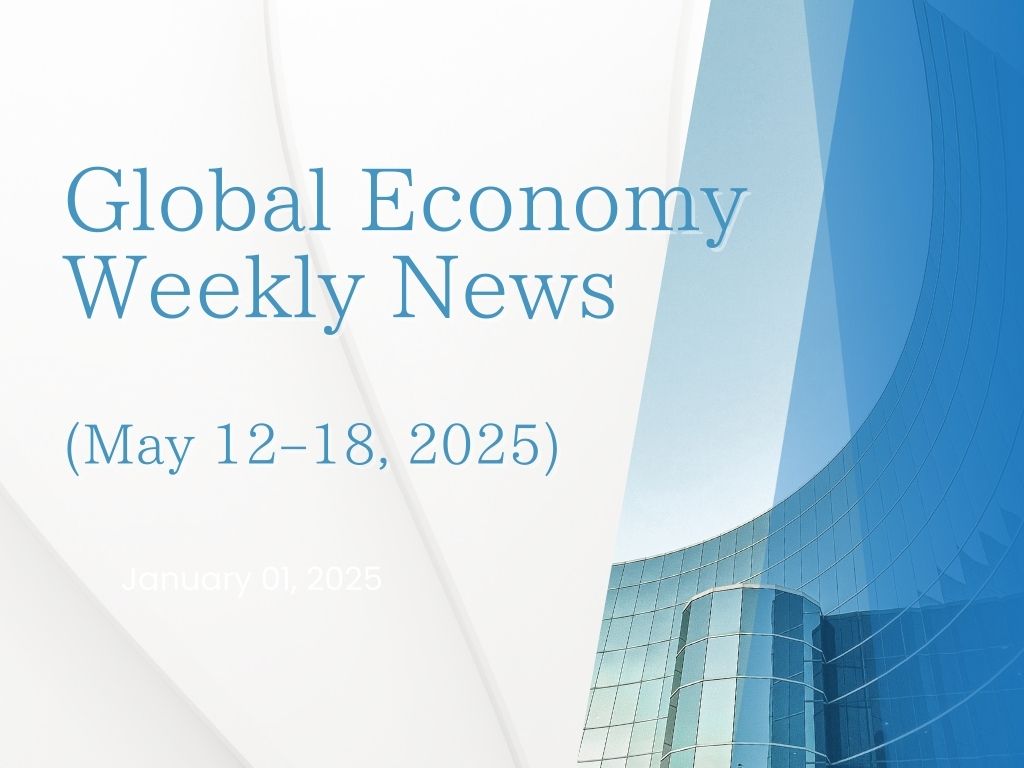Executive Summary
During the week of May 12–18, 2025, global economic trends were shaped by significant developments in trade and geopolitics. The temporary easing of US-China trade tensions provided a boost to global markets, though underlying risks such as slowing US growth and persistent inflationary pressures remain. President Trump’s Middle East strategy focused on pragmatic, business-oriented diplomacy, highlighted by major agreements in the energy and AI sectors and efforts to strengthen ties between Saudi Arabia and Israel. However, US influence in the region continues to wane, with China and Russia playing increasingly prominent roles. These shifts underscore a period of transition and heightened uncertainty in both the global economy and Middle Eastern geopolitics.
1. Easing of US-China Trade Tensions and Market Response
On May 12, the US and China reached an agreement in Geneva to significantly reduce additional tariffs on each other for 90 days. The US lowered tariffs on Chinese goods from 145% to 30%, while China reduced tariffs on US products from 125% to 10%. This agreement brought relief to global stock markets, with the Nikkei Index hitting its highest level in two and a half months. However, uncertainty remains regarding the sustainability of the agreement and the future of tariffs on specific items.
2. Global Economic Trends and Risks
The global composite PMI declined from the previous month, with economic indicators softening in the US, Eurozone, and China. US GDP growth for Q1 turned negative (annualized -0.3% QoQ), heightening concerns over inflation and supply constraints.
3. President Trump’s Middle East Strategy
This week, President Trump visited Gulf countries including Saudi Arabia, signing major contracts in the AI and energy sectors. He also announced plans to send letters to these countries within the next 2–3 weeks, specifying the “costs of doing business in the US,” highlighting a pragmatic, business-oriented diplomatic approach. Trump was warmly received in Saudi Arabia, drawing attention to improved US-Saudi relations and the push for normalization between Saudi Arabia and Israel.
Meanwhile, US-Iran nuclear negotiations saw little progress. The fourth round of talks was held in Oman on May 11, focusing on “technical elements” and agreeing only to continue discussions.
4. Geopolitical Risks and Shifting Power Balance in the Middle East
While President Trump has maintained a pro-Israel stance, he continues to prioritize “America First,” showing caution toward military support and direct intervention. As a result, US influence in the region is relatively declining, with China and Russia increasing their presence. The push for normalization between Saudi Arabia and Israel could cause friction with Arab public opinion and shift the regional power balance.
Conclusion
This week, the global economy saw temporary stabilization driven by the easing of US-China trade tensions. However, concerns over US economic slowdown and inflation persist. In the Middle East, President Trump’s pragmatic diplomacy and the relative decline of US influence, alongside the rise of other powers and evolving Israel-Saudi relations, are reshaping geopolitical risks and the regional power structure.
Key indicators to watch:
- The preliminary Q2 2025 GDP report (May 30 release).
- The upcoming FOMC meeting (June 6-7), which will clarify the Fed’s response to fiscal pressures.
These data points will determine whether the administration’s policies act as an economic stimulus or trigger overheating risks.


